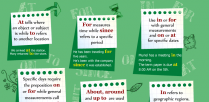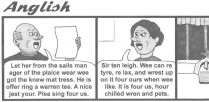Used to something/to do something vs get (be) used to something/to doing something
In English, we have two kinds of phrasal constructions with “used.”
Let’s study the first one – “used to do.”
We need it to show that we did something in the past on a regular basis, but that was finished in the past. One more time in this phrase there is no present, that’s all about past.
- I used to sing songs every evening, but after that domestic conflict, I don’t sing in the evenings any more.
- We used to play the guitar once per week, but now we play every day.
- You didn’t use to study, but now you study. What happened to you?
- They didn’t use to have many books, but now they have.
- He used to be stout, but now he is not.
- She didn’t use to be fat, but now she is.
- There used to be a lot of snow here, now there is no snow these days.
Pay attention to the short forms in the answers: we use the auxiliary verb in positive and negative phrases as usual.
The difference is when we have a comparative phrase, and not the question. As we do not have an auxiliary verb, we cannot put it in the sentence.
- “She didn’t use to go out every day, but now she goes out every day.” Or “She didn’t use to have fun during the parties, but now she has.”
- “You never used to smoke, but now you smoke.”
- “Did they use to travel a lot when they studied in school?” – “Yes, they did, but not too often.”/”No, they didn’t.”
Now let’s study the second construction – “Get/be used to”
We use it to show that we are accustomed to something or to do something, this is not new for us today. As “get used to/be used to” is a preposition, we use the main verb with “-ing” ending.
- I was not used to eating seafood, but I got used to eating it last month.
- You are used to living together.
- She is used to cooking sweets every day, but it was difficult before.
- We got used to speaking English from Monday to Friday, but we can take a rest on the weekends and speak German.
- They are not used to getting up at seven o’clock during summer holidays.
Can you see the difference now?
Find out the homework for the lesson 1 here.







